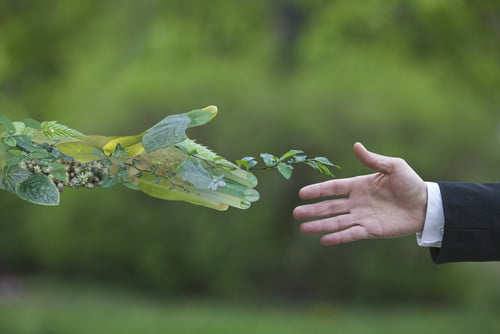The financial industry doesn’t have the best reputation for helping the environment or slowing the progression of climate change. Fortunately, this is something that is starting to change. Earlier this year, Massachusetts Institute of Technology received a $750,000 grant to study the carbon footprint of major financial firms.
However, fighting climate change isn’t just the responsibility of the financial leaders. Everyday investors need to do their part to fight climate change and help the environment as well.
More investors are starting to appreciate the importance of helping the environment. According to a recent report, the market for sustainable assets reached $12 trillion last year.
Finding good, green investments are important. However, it is also important to choose sustainable investments that will be profitable. There are some great tips to succeed as a sustainable investor.
Getting Started as a Sustainable Investor
Many people assume investing is the preserve of the rich or those with an economics degree, but investing is actually so much simpler than you might think. You can be a sustainable investor with a little knowledge.
The very word ‘investing’ can cause many people to switch off, glaze over and start dreaming about their dinner. Even if they are talking about investing in companies dedicated to fighting climate change, they still lose interest quickly.
Many people assume investing is the preserve of the rich or those with an economics degree, but investing is actually so much simpler than you might think. Investing is all about making the most of the money you have. It doesn’t have to be difficult and you don’t need to have a huge pile of money hidden away under your bed.
The rise of the financial technology industry in the last decade means there are now lots of companies out there that will do the hard work for you. They can even help you find assets that match your goals, such as finding companies that focus on sustainability. There are also plenty of resources out that explain the potential pitfalls and the risks you must be aware of before you start. The investing advice from Wonga’s Money Academy is a good place to start.
Once you have an understanding of exactly what it means to invest, you can then start thinking about how to make an investment of your own.
1. Make sure you have savings in place
Sustainable investments can be risky. Companies that focus on helping the environment and lowering the carbon footprint might not always be the best bet from an ROI perspective.
Before you even consider making an investment, make sure you have some savings aside from any money you have to invest, which you can turn to in the case of any unexpected events. For example, if you were to lose your job or the car was to breakdown then it’s essential you have a safety buffer to limit the impact it has on your life. The experts suggest that having savings that cover six months worth of essential expenses, such as rent/mortgage payments, food, utility bills, petrol etc. should be enough. Once you have a sufficient level of savings in place, you can think about how much you want to invest.
2. What are your investment goals?
You want to buy sustainable investments to fight climate change and help the environment. However, you need to keep other goals in mind as well.
The type of investment you should make depends very much on your investment goals. For example, if you’re saving for a child’s education or your pension, you will want a low-risk investment that will allow your money to grow safely. If you have no particular long-term goals in mind and would like your money to grow more quickly, you might be happy to take on more risk. Here’s some advice to help you consider your investment goals.
3. Understanding the costs
There are costs associated with investing and these come in different forms depending on the type of investment you choose to make. Whatever the investment, it’s essential you consider all the associated costs before you hand over a penny. It could be an annual or monthly fee you have to pay, or a commission if you are buying or selling your own stocks and shares. Fortunately, the cost of sustainable investments is not usually higher than the cost of other investments.
4. Making your investments
Now comes the time to actually part with your cash. If you are interested in the potential return an investment in stocks and shares can provide then managed funds, where an expert will invest in a number of the best performing shares on your behalf, will help to reduce the risks. Alternatively, you may choose to spread your money across a range of assets classes such as cash and fixed-income. This can help to limit the risks while providing some opportunity to increase your return. Most importantly, it’s essential you are aware of the risks and costs of every investment you make. Only then should you invest.
Sustainable Investing is the Future
There are a lot of benefits of sustainable investing. You can get a good return, while still helping fight climate change. However, you need to make the determinations listed above first.
Are you thinking about taking your first steps in the world of investing? Perhaps you have some tips of your own? Please share your experiences in the comments below.































